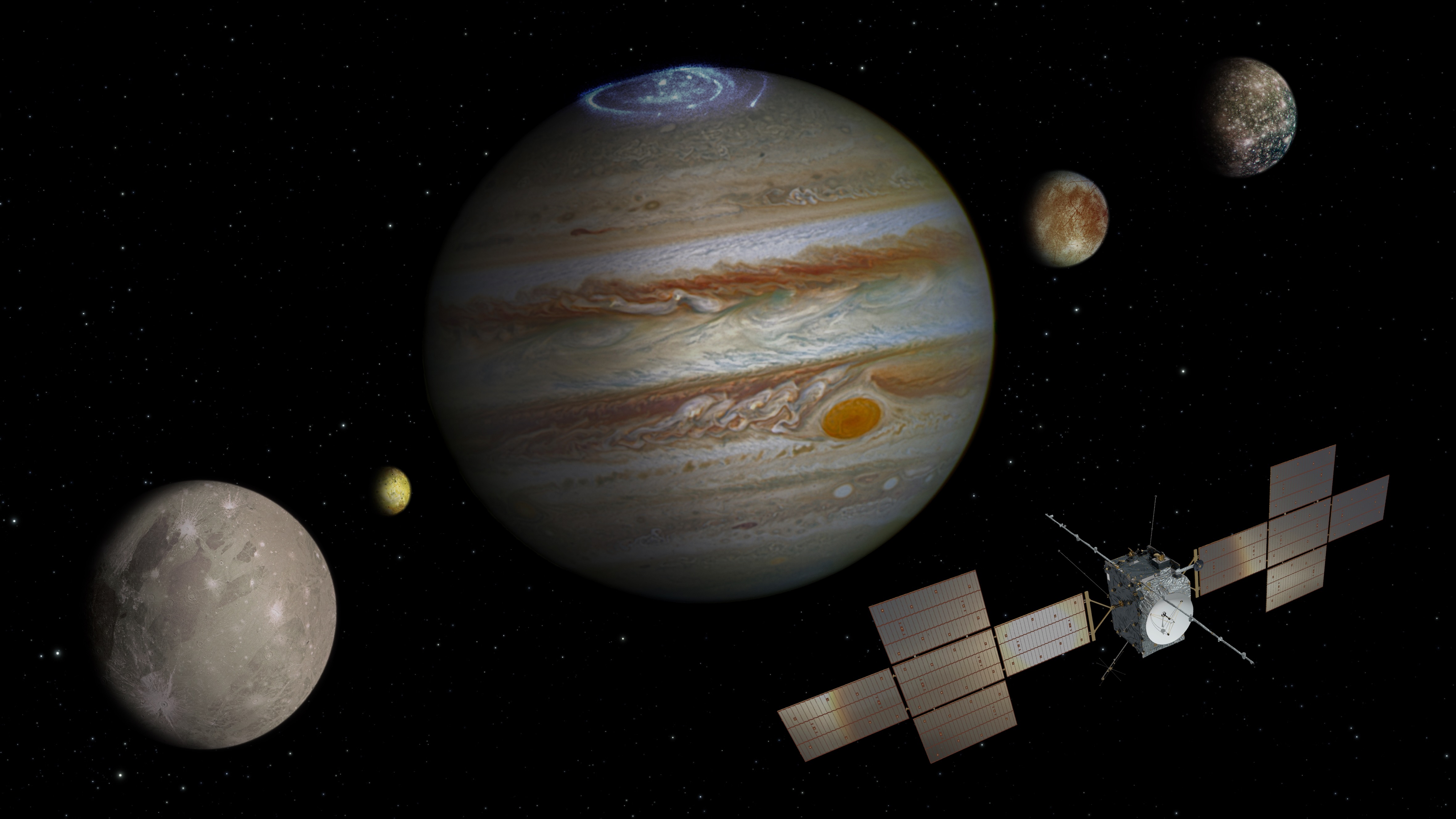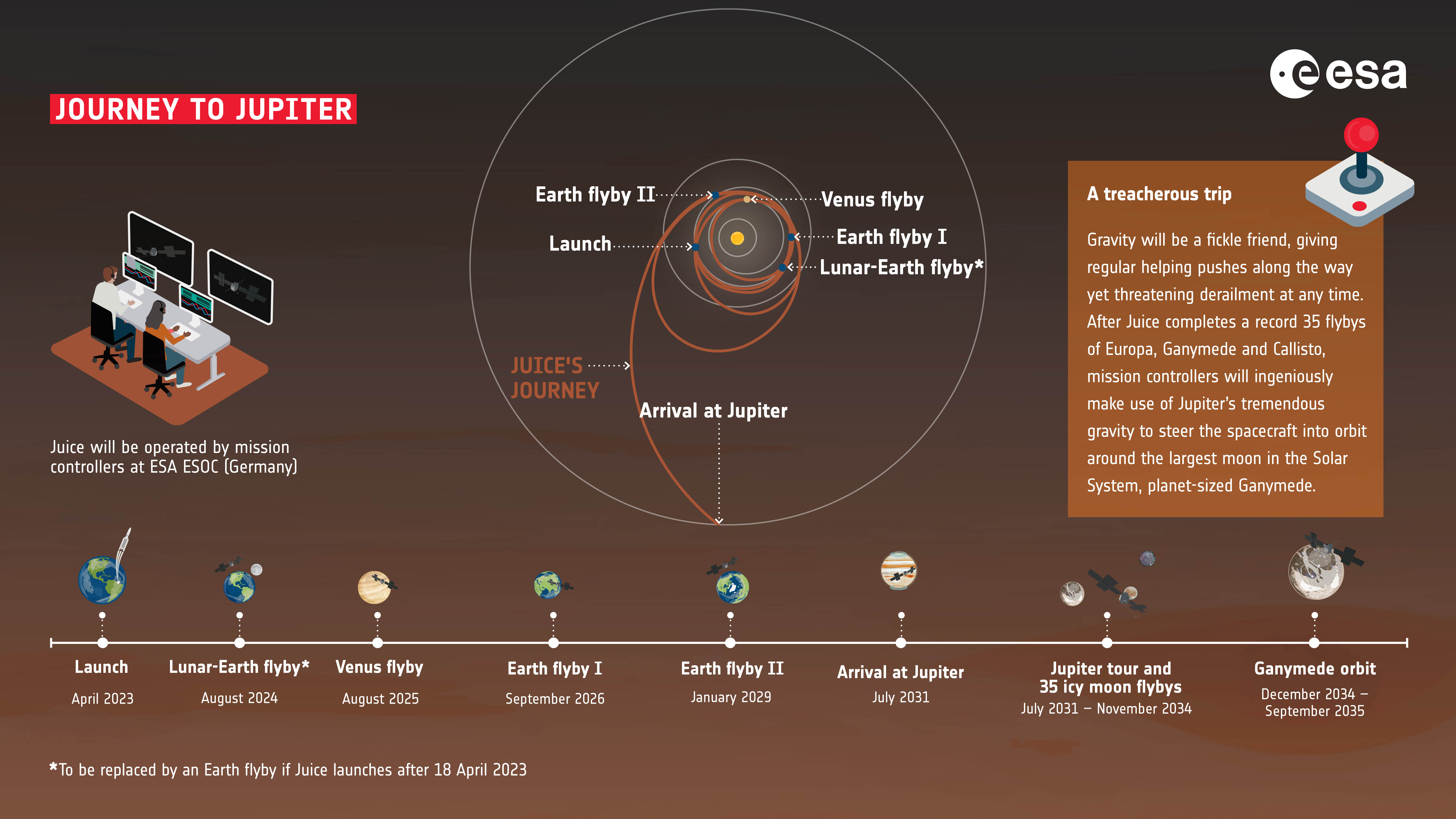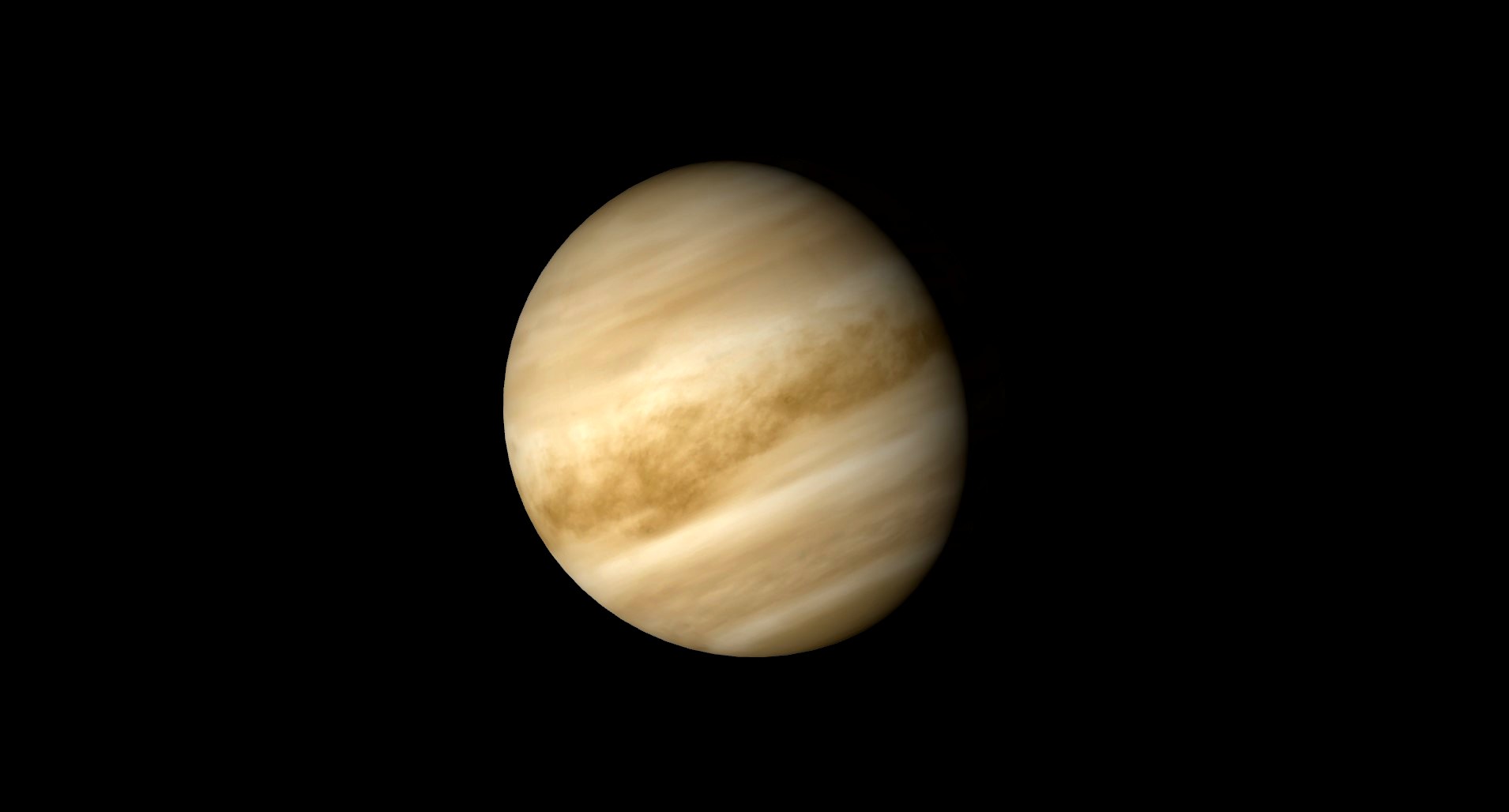
The Jupiter Icy Moons Explorer (JUICE) left Earth a year ago, embarking on a mission to explore Jupiter's potential ocean moons — Ganymede, Callisto and Europa — in detail.
Water is a vital ingredient for life on Earth, so learning more about its distribution on these moons and others, such as the Saturnian moon of Enceladus, can tell us about whether these ocean worlds can host life — life as we know it, at least.
Scientists can't yet drill through the icy crusts of Ganymede, Callisto, and Europa, however, which means they can't yet determine the composition and characteristics of their respective bodies of water. In fact, scientists can't even verify the existence of those oceans just yet. On the bright side, with JUICE, there may be a workaround.
Lacking physical access to the subsurface oceans, JUICE relies on radar to see deeper into these icy moons. It's a sort of ice-penetrating radar that will offer the next best investigative method to assess these buried seas and, thus, the habitability of these moons. And last week, scientists revealed a little more about the sophisticated ice-penetrating radar system JUICE will use.
Related: Why will it take Europe's JUICE spacecraft 8 years to get to Jupiter?
"We can use all this information to improve our understanding of the distribution of liquid water in the solar system," Elena Pettinelli of Roma Tre University said in a statement. "There's much more water than we thought 20 or 30 years ago, and it's really interesting to use this technique to try to understand where the water could be."

Gazing beneath the ice
Set to arrive at the Jovian system in July 2031, JUICE will observe the magnetic fields and the atmosphere of Jupiter, as well as its moons and faint ring system. According to the spacecraft's operators at the European Space Agency (ESA), the theme of this investigation is the emergence of habitable worlds around gas giants.
To conduct these operations, JUICE carries a suite of 10 cutting-edge scientific instruments. One of these is, of course, the ice-penetrating radar. It's called the Radar for Icy Moon Exploration (RIME), and can study the subsurface structure of Jupiter's icy moons down to a depth of around 5.6 miles (9 kilometers). The main aims of RIME will be to characterize Ganymede as a planetary object and as a possibly habitable world, to study recently active zones of Europa, and to confirm whether Callisto is a remnant of the early eras of the Jovian system.
The JUICE team hopes RIME will be able to determine the depth of the oceans beneath the ice shells of these moons too, and decode the chemistry of any water that may comprises such bodies of liquid. These two things are linked, with Pettinelli stating that the depth of radar penetration on the icy moons will depend on the saltiness, or salinity, of the water. Salt impedes the transmission of radar signals, which means it can also reveal important information to the team in a sort of reverse deduction way.

JUICE is also carrying systems similar to RIME, including those that have already been tested here on Earth in detecting liquid water. Away from our planet, the first ever planetary subsurface radar, known as the Apollo Lunar Sounder Experiment, was tested on the moon during the Apollo 17 mission. Even further afield, Pettinelli was part of a team that used radar loaded aboard the Mars Reconnaissance Orbiter to discover the existence of liquid water at the south pole of Mars.
She is also currently developing a radar system that will be carried to Venus, the second planet from the sun and the solar system's hottest world, along with the ESA mission Envision. Envision will be the first project to investigate Venus from its inner core to its upper atmosphere, observing interactions between the hellish planet's different layers, including its atmosphere, surface as well as subsurface and interior. The mission aims to provide a more complete view of Venus, outlining the planet’s history, activity and overall climate.
Envision will carry two radar systems: The Subsurface Radar Sounder (SRS) and the High Frequency (HF) sounding radar. Both will be used to probe the top 0.6 miles (1 kilometer) of Venus' subsurface. This should help scientists build a better picture of the climate history of the planet that is often referred to as "Earth's twin."
Pettinelli presented a fuller picture of the utility of RIME and other planetary radar at the Geosciences Union General Assembly EGU24 on April 19.







